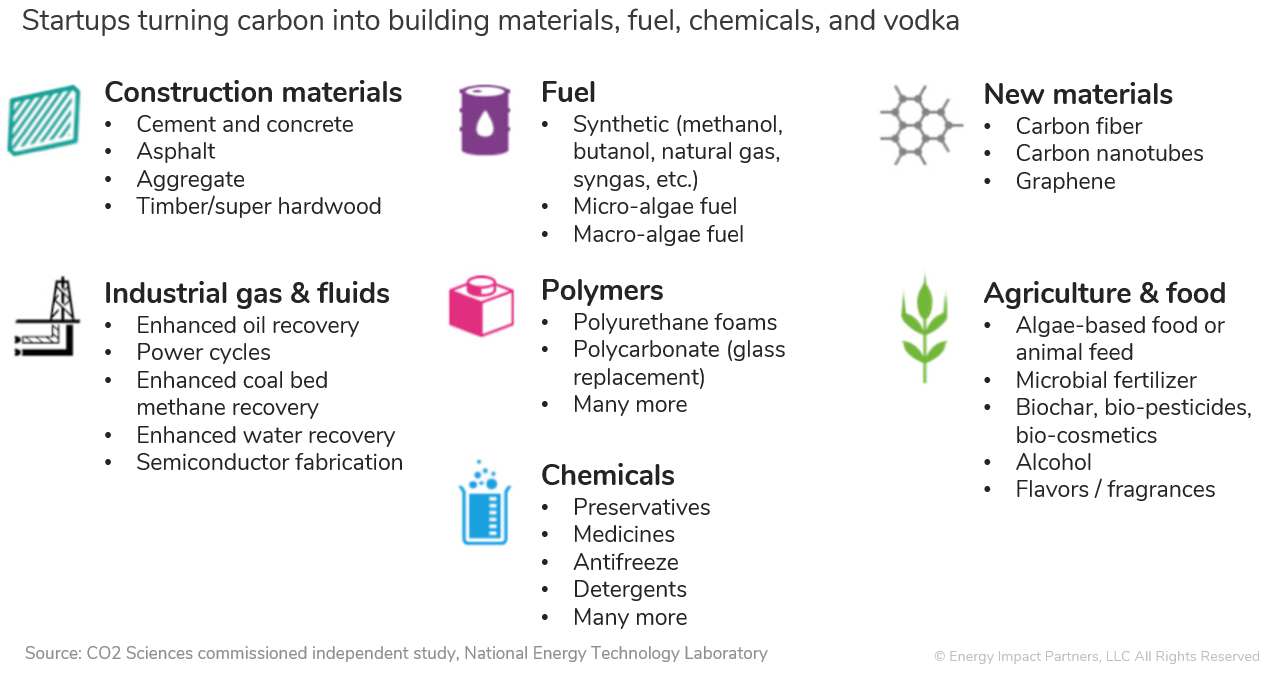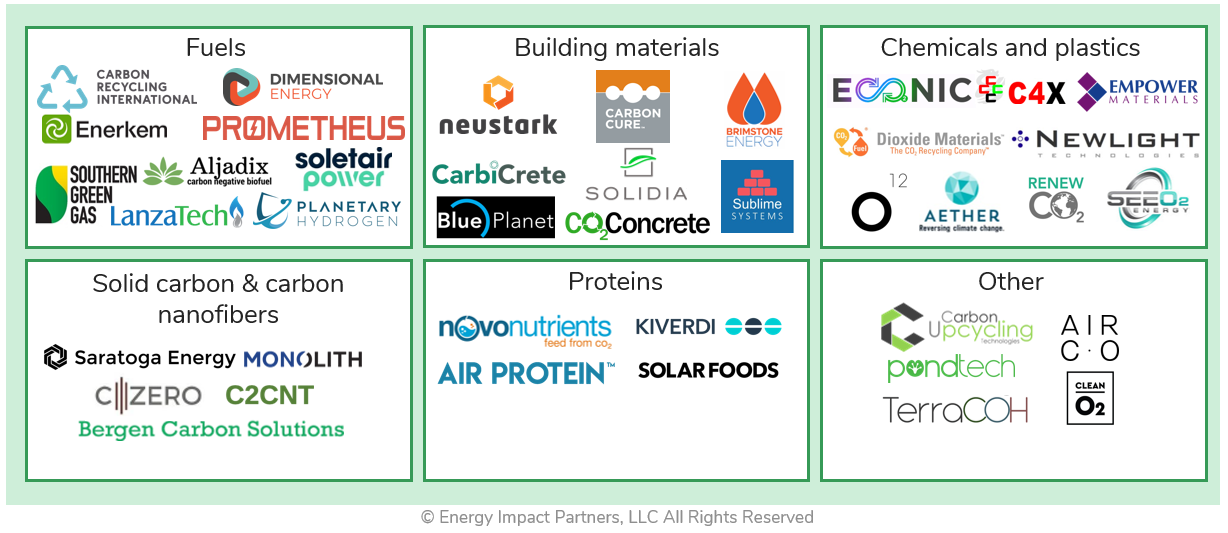
🌎 Nuclear fleet week #269
$80bn+ worth of new AP1000 reactors
Celebrating the Biden-Harris climate win and carbon negative technologies
Happy, happy Monday!
Cheers to our new republic! We can finally breathe a sigh of relief after 4 years of climate denialism from the commander in chief.
This week, we explore the changing carbon value chain, looking at new developments in the carbon to value space and what “negative emissions” funds might mean for these startups.
And of course, we spell out what the president elect means for climate action. Tl;dr without Democratic control of the Senate, the Biden administration will rely on executive orders – a strategy unsuccessfully pursued by Obama. Cue all eyes on Georgia.
Thanks for reading!
TLDR; Climate has picked up bipartisan resonance during the election cycle, and Biden has a mandate to usher in significant change. However, there’s still a lot riding on the Senate’s readiness for durable climate impact.
Things to look forward to now: Absent of Senate support, Biden’s climate change impact will largely be limited to his use of executive powers. As we saw with Obama’s climate legacy, executive orders are tenuous in lasting governance. That said, there’s still some promising early moves that could set us on a more climate positive path:
Things a bit further out: All significant climate legislation hinges on Senate signoff. One workaround strategy could tie clean energy measures to bipartisan pandemic-related stimulus efforts.
⚡ AddÉnergie, a Québec City, Canada-based EV charging startup, raised $53m in Series C funding from Mackinnon, Bennett & Company, Business Development Bank of Canada, among others. More here.
⚡ Skeleton Technologies, a Tallinn, Estonia-based manufacturer of ultracapacitor-based energy storage, raised $49m in Series D funding from EIT InnoEnergy, Northvolt, FirstFloor Capital, among others. More here.
⚡ Witricity, a Watertown, MA-based wireless power transfer company for EVs, raised $34m in funding from Stage 1 Ventures and Mitsubishi. Forbes has more here.
🍄 The Protein Brewery, a Netherlands-based “brewer” of plant-based protein, raised $26m in Series A funding from Novo Holdings, Roquette Ventures, and Unovis Asset Management. More here.
🌱 Clarity AI, a New York-based platform optimizing the societal impact of investment portfolios, raised $15m in funding from Deutsche Börse AG and Mundi Ventures. More here.
🔬 UniSieve, a Zurich, Switzerland-based developer of molecular membrane solutions reducing energy usage, raised $5m in funding from Wingman Ventures, the EU Green Deal Grant, and the EIT Climate-KIC initiative. More here.
💨 Sinai Technologies, a San Francisco, CA-based decarbonization software platform, raised $4m in Seed funding from Afore Capital, Abstract Ventures, and Coelius Capital (see our prior Sinai coverage here). More here.
Natural Order Acquisition, a tech and plant-based foods focused SPAC, cut its IPO size from $250m to $200m. More here.
Baker Hughes plans to buy Compact Carbon Capture in an effort to expand beyond oil and gas and transition to a low-carbon future. More here.
[We’re edited the newsletter version lightly for length; visit our website for the full feature].
Under many projections for limiting climate change, capturing a large amount of carbon dioxide will be necessary to keep global warming to a few degrees. The reason for this is simple – there is no other way for us to reduce our emissions within the necessary timeframe. Even with rapid deployment of renewable energy, electrification, and increased efficiency, carbon removal will be needed to address emissions from hard-to-decarbonize sectors like aviation, shipping, and agriculture.
Carbon capture has a bad rap for being too expensive and difficult to deploy at scale. However, there’s been a recent surge of startups in carbon conversion and utilization - a.k.a. reusing carbon as an ingredient for materials. This space, which has received a number of different monikers (e.g., carbon to value, carbon utilization, and carbontech) may represent a major shift for the carbon ecosystem and encourage higher levels of capture necessary to meet a 1.5-2ºC future.
Increasing policy pressure and corporate interest in decarbonization could drive a major ramp up in this space, but serious questions remain. Will there be a rapid tipping point for this space, or will existing barriers keep startup growth small?

Building materials: The cement and concrete industry make up around 7-8% of global emissions annually, a figure that is expected to grow as construction booms in rapidly developing countries. The cement industry has limited pathways to decarbonizing and is likely to require some form of carbon capture and/or utilization to meet emissions goals, so this is expected to be the largest market for carbontech.
Innovators: Carbon Cure, Solidia, Sublime Systems
Fuels: Zero-carbon or low-carbon fuels could help rapidly decarbonize the transportation sector, both bridging the transition to electric vehicles and solving the challenge of aviation and shipping
Innovators: LanzaTech, Dimensional Energy, Prometheus Fuels
Chemicals and plastics: CO2 can be transformed into a variety of useful materials in the petrochemicals and plastics space. Unilever recently announced that it would replace all of the carbon from fossil fuels in its clean products with “renewable or recycled” carbon by 2030.

Carbon-to-value may represent the most VC-backable sector within the broader circular carbon economy. Carbon-to-value presents a double whammy of removing carbon while generating additional value. It can plug into the huge addressable markets of building materials, fuels, and chemicals which are currently lacking a pathway to decarbonization. On the other hand, different areas of circular carbon require forming entirely new markets and infrastructure and are therefore better suited for longer-term venture investors such as Breakthrough Energy Ventures.
Growing commitment to decarbonization may be a key driver of C2V innovation. The first adopters will be companies that have participated in the recent spate of net zero commitments, including notable announcements from Unilever and Airbus who have significant R&D teams for pilot testing and development. These corporates will be essential to scaling up deployment of circular carbon solutions.
“Negative emissions” could be an interesting revenue stream. Large tech companies such as Microsoft, Shopify, Stripe, and Amazon have all made decarbonization investments - either through a dedicated climate fund and/or incorporating carbon removal options to customers. By directly investing in high quality carbon removal technologies, these corporates can help drive down the cost of frontier carbontech.
Challenges around unit economics and incentivizing adoption remain. Despite a few initial adopters, corporates will be reluctant to purchase carbon negative products purely for climate reasons. C2V products still need to be on par or cheaper than existing materials and even then, many legacy industrial, building, or transportation companies are extremely conservative and unwilling to adopt new technologies given the scale and risk of their businesses.
Policy may be the deciding factor. No matter the degree of carbontech innovation, pricing the externalities of carbon emissions will be necessary to incentivize corporates to adopt carbon negative products. This level of policy needed will likely happen in Europe first, with other countries watching and learning to follow in their footsteps. For now at least, carbontech companies need to be able to succeed without strong governmental support, especially in the US.
Special thanks to Sameer and Nicholas from the Circular Carbon Network and Madison from Energy Impact Partners. If you’re interested in learning more about this space, join CCN’s membership network and check out their just released market report. They’re also looking to hire a Product Management Fellow to continue building out their circular carbon ecosystem.
Some stellar sleuthing from The Atlantic reports that Bezos’s $10b Earth Fund is planning on deploying ~$700m to 9 big name environmental groups: $100m each to TNC, EDF, NRDC, WWF, and WRI as well as $10-$50m each to 4 more. All in, the Earth Fund’s first round of funding appears to be status quo to the Big Greens.
Climate groups were angry Proposition 22 passed in California, meaning drivers with companies like Uber, Lyft, and Doordash will be considered independent contractors and not employees. It also means fewer workers’ rights and more cars on the road = more pollution.
China is stepping on the gas by making all new vehicles sold in 2035 “eco-friendly” - half will be “new energy” (electric, fuel cell) and the other half will be hybrids. The world’s largest automarket will have to significantly ramp up its 5% new energy vehicle sold share in 2019.
As the pace of climate change accelerates, radical geoengineering proposals such as injecting aerosols into the atmosphere to cool the planet, are gaining traction and funding. Michael Gerrard, a director of Climate Change Law at Columbia, likens geoengineering to “chemotherapy for the planet: If all else is failing, you try it”.
Researchers fear that offset programs to reach “net zero” emissions overestimate carbon reductions and avoid direct efforts to clean up operations. One of the primary concerns is leakages – resource protections in one area simply lead to greater destruction elsewhere.
More than 1,000 of the UK's “greenest, most innovative businesses” are set to receive up to £175k each from £134m in total funding from the Sustainable Innovation Fund, a cornerstone of the UK’s £1.25bn investment package. Projects range from Rovco autonomously servicing offshore wind turbines to KegTracker reducing beer waste with AI.
Volvo announced that they will sell a complete range of electric, heavy-duty trucks in Europe starting in 2021. Despite the EV startup market heating up in the US, Europe has actually led EV demand growth, with 50% sales increase in 2019 vs a 10% drop in the US.
A new poll by Climate Nexus, Yale, and George Mason found that 82% of the ~2,000 surveyed believe 100% clean energy should be the primary goal of US energy policy. Even Fox News reports that 70% of voters want the government to spend more on green energy.
Industrial carbon capture is at a tipping point, according to G2VP. The industrial/ power sectors are difficult to decarbonize, and the cost of capture is expected to drop with new technology.
According to Quartz, “The second climate tech boom is here.”
Got a sweet tooth? You can now chew a little easier – as candy maker Mars Inc. says it has now eliminated palm-oil providers who cannot commit to preventing deforestation.
Nonprofit Leaders for Climate Action (LFCA) developed a “sustainability clause” that European VCs have started to include in term sheets to nudge portfolio startups toward climate goals.
Satellite imagery and AI are enabling better forest management by identifying deforestation, wildfire risk, and pests (see Overstory in our prior feature on wildfires.)
AirMiners announces a carbon removal accelerator.
Flying cars. Sort of, actually, this time.
💡 Carbon to Value: Apply by January 27 2021 to the Carbon to Value Initiative, a unique partnership driving the creation of a thriving innovation ecosystem for the commercialization of carbontech.
💡 MIT ClimateTech & Energy Prize: Students can compete for a $100k grand prize in the largest and longest-running university cleantech startup competition. A virtual info session will take place on 11/11.
💡 Energy Tech Investors 50: Nominate investors leading the sustainable energy transition, by Dec 1st.
🗓️ 11/11 Duke University Energy Conference: Join to listen to and participate in virtual keynote presentations, moderated discussions, and networking sessions focused on resilience.
🗓️ 11/12 Energy Innovation Showcase: Explore the emerging technologies, creative business models, and new ideas that are propagating the energy space.
🗓️ 11/13 CELI’s Clean Energy 101 Course: Join the Clean Energy Leadership Institute for a crash course into clean energy covering finance, technology, and policy.
Senior Editor @Exponential View (see our feature with Azeem)
Investment & Deal Executive @Green Angel Syndicate
Power Analyst @Silicon Valley Clean Energy
Development Analyst @Fervo Energy
Farmer Experience and Support @SwarmFarm Robotics
Strategic Partnerships Leader @Netafim
Founding Designer @Grow
Manager, Sustainability & Production @Netflix
Project Manager, Supplier Clean Energy Program @Apple
Feel free to send us new ideas, recent fundings, or general curiosities. Have a great week ahead!

$80bn+ worth of new AP1000 reactors

Europe’s latest storage policies show the future may run on the chemistry we already have

What we heard at the Davos of Distributed Energy Resources